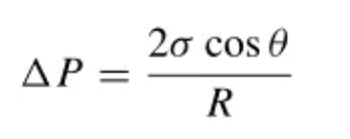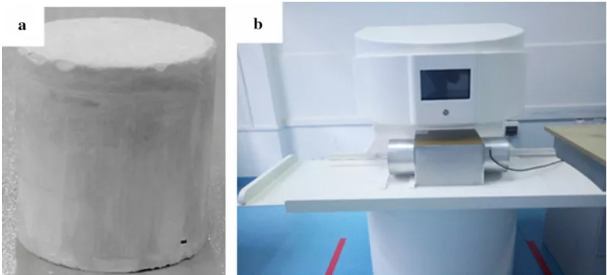Introducción
Expansive soil is a special clay with high expansion, multi-cracks, and over-consolidation characteristics, distributed in more than 40 countries including China, the United States and Canada. Analizador de RMN Due to rainfall and evaporation, this soil will undergo a dry-wet cycle. Since expansive soil contains hydrophilic minerals such as montmorillonite and illite, it will expand or contract in volume under the action of water. After many dry and wet cycles, it will affect the mechanical properties (compression modulus, expansion deformation and shear strength) of low-rise buildings, especially masonry buildings. Expansive soil has caused over 9 billion US dollars in losses worldwide.
Expansive soil is an important factor that affects the safety of buildings, and it is also the main source of danger that causes serious accidents. Actualmente, many scholars have studied the expansion and deformation law of expansive soils: expansion rate, plasticity index and initial dry density are commonly used indicators to evaluate the expansion ability of expansive soils. The researchers believe that the macroscopic deformation of the soil is caused by changes in the pore structure, and the higher pores in the expansion process pose a greater threat to the building. Sin embargo, the pore structure changes of the expansive soil during the expansion process and after several dry and wet cycles need to be further studied.
This paper discusses the internal relationship between the expansion deformation of the expansive soil and the change of pore structure through laboratory experiments. The nuclear magnetic resonance technique was used to study the swelling characteristics of disturbed soil samples under 0-4 dry and wet cycles, and the variation of pore structure with water content and cycle times was analyzed. It can provide useful guidance for revealing the swelling mechanism of expansive soil and building safety evaluation.
Experiment
Basic characteristics of test soil
The expansive soil used in this article was taken from the same underground layer in Nanning, Porcelana. According to relevant classification standards, the soil is weakly expansive.
Preparación de muestras
Disturbed soil is used in this study. Before the test, first prepare wet soil with a water content of 10.0% and store it in a sealed bag for more than 48 hours. A non-magnetic Teflon ring knife was used to compact the test piece with a diameter and height of 40 mm to its optimum compacted moisture content, and a total of 7 test samples were prepared.
Expansion test
The expansion test is performed in the consolidation apparatus. ①Place the three samples together with the ring knife into the consolidation instrument and record the initial extensometer reading; ②Add distilled water to cover the bottom of the sample to allow the soil sample to absorb water and expand freely; ③Record the change of the extensometer reading until the expansion tends to Stable; ④ Seal the sample for NMR testing; ⑤ After expansion, dehydrate the saturated sample to a predetermined weight at a temperature of 40 ° C, which is regarded as a dry-wet cycle completed.
NMR Test
① NMR pore measurement mechanism: The ratio of pores with different pore sizes can be calculated through the NMR T2 distribution curve to calculate the water content. When the pores are spherical, there is a corresponding relationship between the T2 distribution and the pore diameter R:

② The saturation-suction method determines the T2 cut-off value: as shown in the Young-Laplace equation, increasing the suction force, the water in the large pores is discharged first, and then the water in the micropores is discharged. By measuring T2 curves under different suction forces, t2 values corresponding to different pore radii can be obtained. When the suction force increases to the critical value, all the water in the large pores is discharged, while the water in the micropores still exists.

entre ellos, △ P is the pressure difference; σ is the liquid surface tension; θ is the contact angle; R is the aperture.
en este papel, la T2 valor de corte (t2do) is defined as the critical value between macropores and micropores. Because the soil sample is loose, the continuity is poor, and centrifugation is difficult, the saturation-suction method is used to obtain the T2 cierre. The method is as follows: test the T2 curves of saturated and unsaturated samples undergoing critical suction; then convert these two T2 curves into cumulative curves to obtain the cumulative distribution of total water (macropores and micropores) and the cumulative distribution of adsorbed water ( Micropore); the intersection of the two cumulative curves is the T2 cutoff between the macropore and the micropore. Water in the high T2 (t2> t2do) part represents large pores, and water in the low T2 (t2 <t2do) part represents small pores.
③NMR test: The testing instrument adopts the Micro12-150H-I NMR analyzer (Cifra 1) produced by Suzhou Niumag Co., Limitado., using a 60mm coil, and the effective test area is φ60mm × 60mm. The NMR test process is as follows: prepare soil samples (φ40mm × 40mm); complete different dry and wet cycles in a non-magnetic ring knife; saturate all samples for 48h; perform NMR tests on saturated soil samples with different dry and wet cycles; data Collection and analysis.

 mohoso
mohoso